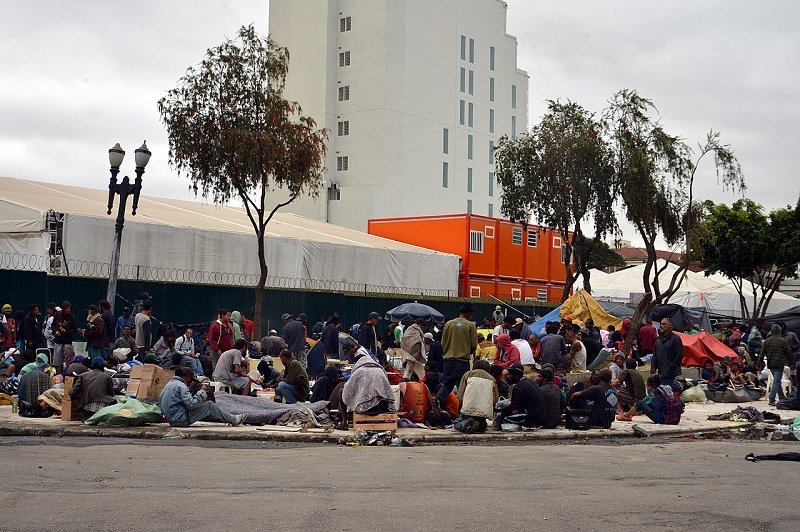From January to December 2024, the number of drug users on Rua dos Protestants, the current location of Cracolândia in downtown São Paulo, decreased. The monthly average, which had previously exceeded 500 people per day, dropped to around 100 by the end of the year. The numbers are calculated daily by the City of São Paulo using drones and monitoring by the Metropolitan Civil Guard (GCM) and are closely observed by the Tarcísio de Freitas (Republicans) administration with the support of the Military Police.
This Content Is Only For Subscribers
To unlock this content, subscribe to INTERLIRA Reports.
Nearby Streets
Despite the decline in the main flow—the term used to describe the gatherings of drug addicts in open drug-use scenes—groups of 10 to 30 individuals continue to spread across nearby streets in downtown São Paulo. Areas around Rua dos Protestants, where fences were installed in June 2024 to delimit the occupied space, remain affected. Smaller groups have been reported at locations such as the corner of Rio Branco Avenue and General Osório Street, between Nébias and Gusmões Streets, and Duque de Caxias Avenue at Guaianases Street. Recently, groups of drug users with tents have also been spotted in the Amaral Gurgel Street tunnel, below Roosevelt Square.
Dangers
Addicts frequently run across the streets, posing a constant risk to drivers. Accidents are not uncommon, as demonstrated by a tragic incident on Friday morning (03/01) when a woman was run over and killed. According to the police report, an 83-year-old businessman was driving towards Bela Vista when the victim suddenly ran across the street, and he was unable to stop in time.
Street Market
Drug users set up tents in these areas, selling and consuming drugs openly. On Saturdays and Sundays, when Minhocão is closed to vehicles, and during nighttime hours, the flow of users increases. Makeshift stalls made from wooden crates display items for sale, such as drinks. The smell of urine is pervasive in these areas.
Operations
Throughout 2024, 14 police operations were conducted with the participation of the GCM and the Military Police. These operations, alongside drone monitoring, revealed a decreasing number of crack users. In January, 1,209 individuals were counted in Cracolândia during a police operation. After a slight increase in March, subsequent months showed a consistent decline, with the lowest number recorded during the final operation of the year on December 17, when 655 users were reported, according to state government data.
Crime Data
Between 1 January and 29 December, 12,227 police reports for robberies or thefts were registered in the region commonly referred to as Cracolândia. This translates to an average of 33 crimes per day in an area encompassing parts of the neighborhoods of República, Santa Cecília, Campos Elísios, Vila Buarque, Santa Ifigênia, and Higienópolis in downtown São Paulo. The data is provided by the São Paulo Public Security Department (SSP-SP).
Cell Phones Are the Most Targeted
Cell phones are the primary target of criminals in the region, according to police reports. Other frequently stolen items include wallets, money, bags, backpacks, and in some cases, entire store inventories during looting incidents.
Drop in Reports
In 2023, the SSP began recording crime data for the region on 10 April. Between April and December of that year, 9,496 crimes were reported. During the same period in 2024, the number fell to 8,641, reflecting a 9% decrease. This reduction lowered the daily average from 36 reported crimes in 2023 to 33 in 2024.
Analysis:
The reduction in the main flow of drug users in Cracolândia—from over 500 to around 100 people per day in 2024—represents a significant shift in the open drug-use landscape in São Paulo. This decline reflects efforts by municipal and state authorities, including the use of drones, the installation of fences, and intensified police operations. However, this reduction does not necessarily indicate a resolution of the issue but rather a dispersal of the flow to adjacent streets, creating additional challenges for public management and safety.
The dispersion of users into nearby areas highlights the limited impact of strategies aimed at containing the Cracolândia dynamic. While smaller groups are less visible, they continue to pose challenges, including increased risks of traffic accidents and the persistence of illicit drug markets. These dispersed gatherings also complicate efforts to manage the issue comprehensively, requiring more adaptive and localized responses from authorities.
Crime data from the region provides further valuable insights. While the 9% reduction in reported crimes between April and December 2024 is a positive development, the region still experiences an average of 33 crimes per day. This decrease, though encouraging, should be cautiously interpreted, as it may reflect underreporting, shifts in criminal behavior, or the direct effects of intensified enforcement operations. Ultimately, addressing the challenges of Cracolândia requires more than a public safety approach. An effective response must involve an integrated strategy encompassing public health, social assistance, urban planning, and security efforts to tackle the root causes of the issue.
Sources: A Folha de SP; G1.




